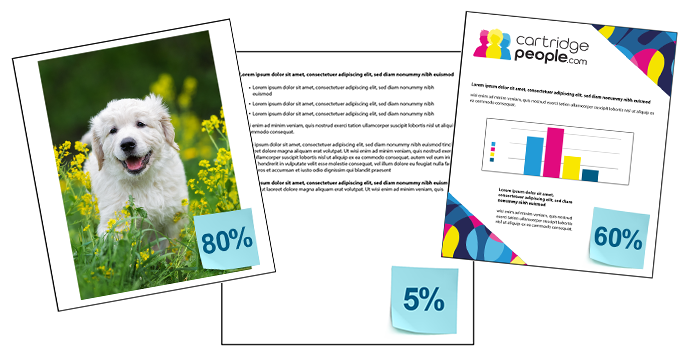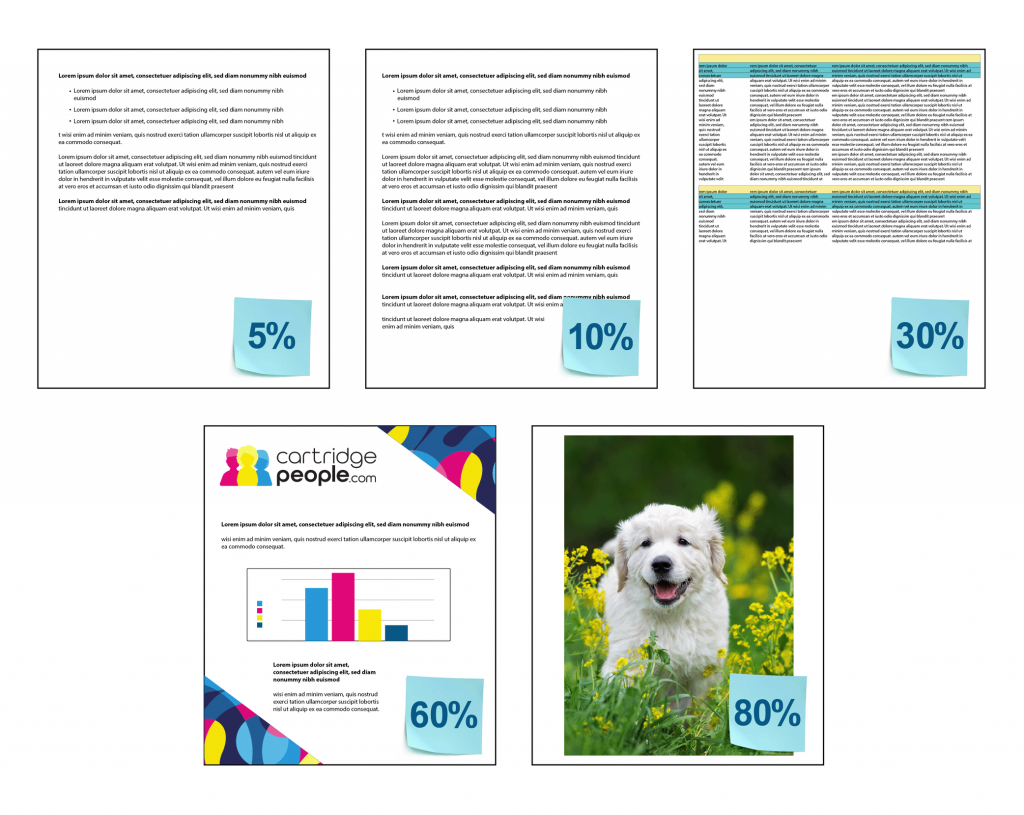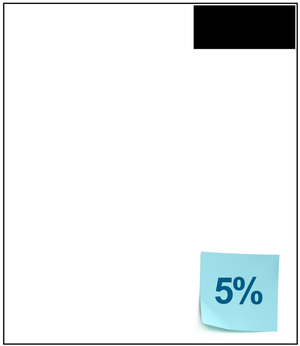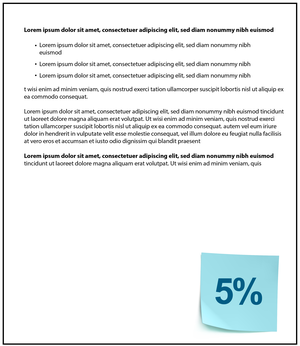
5% Page Coverage for Ink and Toner Explained
It’s understandable how the issue of page coverage can be confusing.
There’s terminology that can make the situation even more unclear and when most ink and toner cartridges state they’ll print at 5% page coverage, the inevitable question is:
What is 5% page coverage?
It can sound obvious to say that the number of pages you can expect to print using one of our printer cartridges will vary depending on what you’re putting on the page, but just how much it can vary isn’t always made clear.
For someone printing the minutes of a committee meeting at home where it’s a standard text document and little else, you’d imagine them being able to get close to the page yields associated to the cartridge(s) on our website. But if you’re producing a report where you have a couple of pie charts or an image or two in addition to the text, then the coverage will be more and hence you may not be able to print as much.
Did you know? Page yields for toner and ink cartridges are based on ISO standards of 5% coverage. That’s roughly 14 complete lines of text in 11 point font per printed page.

Important: The page yields we display refer to the maximum number of pages you’re likely to print.
The 5% page coverage benchmark has been in place for years across our industry and is enforced by the Office of Fair Trading. You’ll see in many of our product descriptions that we also refer to ISO (International Organisation for Standardisation) who also enforce this standard.
What they created was a five-page document to demonstrate the various designs of the most commonly printed pages.
We know that 5% page coverage doesn’t sound like a lot, and when illustrated as a shaded area of a page (below), it doesn’t. But the key thing to remember is how the ink in that shaded area can be distributed to create text. In the example below, you can see that 5% page coverage is actually a sizeable passage of text. For that reason, it’s important to understand the page coverage difference and relate this to what you’re likely to be printing.

If you’re going to be printing pictures in full colour primarily then, you need to consider how this will reduce the number of pages you’re likely to be able to print.



